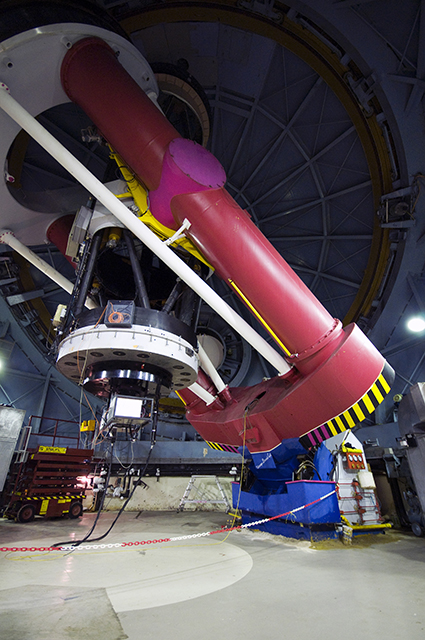Neo-Narval, a new instrument at the summit of the Pic du Midi
Exoplanets are on a roll! This is evidenced by the 2019 Nobel Prize in Physics awarded to the Swiss Michel Mayor and Didier Queloz for their discovery of the first exoplanet orbiting a star similar to the Sun. Today, all the observatories in the world are trying to discover new ones and study them, thanks to increasingly efficient instruments. In this context, the Pic du Midi observatory has acquired a new astronomical instrument, Néo-Narval, installed on the Bernard Lyot National Telescope. This ultrastable spectropolarimeter operates in the visible part of the light spectrum and thus allows the detection of exoplanets around magnetically active stars of lower and intermediate mass.

The Neo-Narval project is part of the renewal of the instrumentation of the Bernard Lyot Telescope (TBL) at the Pic du Midi. For nearly two decades, the Bernard Lyot telescope has been dedicated to the study of the magnetic fields of stars by high-resolution spectropolarimetry, in particular using the Narval instrument. The evolution of this research theme, for an intensive study of stars, similar to the Sun, magnetically active and hosts of planets, has led the research teams to develop Narval into Néo-Narval, an instrument capable of measuring the radial velocity of the star observed with respect to the observer, with an accuracy of less than 3 m/s thanks to an instrumental stability multiplied by 10 with respect to Narval. Measuring the radial velocity of a star is a technique frequently used for the detection of exoplanets. It also allows to study the rotation of stars, as well as the oscillations of their surface.
Neo-Narval will pursue three major objectives:
- the search for and confirmation of exoplanets around magnetically active stars, obtained by combined spectro-polarimetry ;
- the exploration of the last stages of the evolution of an exoplanetary system;
- the continuation of classical studies on stellar magnetic fields.
Narval, then Néo-Narval, were developed within the Observatoire Midi-Pyrénées (OMP – CNES/CNRS/Météo France/IRD/UT3 Paul Sabatier), by the scientific and technical teams of the Institut de recherche en astrophysique et planétologie (Irap/OMP – CNRS / CNES / UT3 Paul Sabatier), of the Bernard Lyot Telescope (TBL) and the common services of the OMP, with the support of the Occitanie / Pyrénées-Méditerranée Region, giving them worldwide expertise in the field of stellar spectropolarimetry.
IRAP Contacts
- Torsten Boehm, torsten.boehm@irap.omp.eu
- Arturo Lopez Ariste, Arturo.Lopezariste@irap.omp.eu






